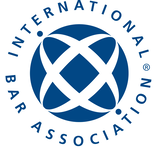Authors: Okorie Kalu[1] Tobenna Nnamani[2]
Introduction
Many jurisdictions have enacted statutes which sanction netting and set-off in relation to financial markets. They have done so primarily to reduce systemic risk because of the very large amounts involved i.e. that a default by one institution may bring down others at the cost of the financial system and ultimately at the cost of the taxpayer[3].
President Muhammadu Buhari on Friday, 7th August 2020 assented to the Companies and Allied Matters Bill, recently passed by the National Assembly of the Federal Republic of Nigeria[4]. The new Act which is the principal legislation that governs the business operations of companies and insolvency proceedings in Nigeria has generally sanctioned set-off and netting for the first time in the law by the positioning of Chapter 28 under the existing general insolvency framework in the new law[5].
What is Set-off and Netting?
Set-off can simply be defined as a form of payment through the discharge of reciprocal obligations. In other words, a debtor can set off the crossclaim owed to him against the main claim which he owes his creditor. Thus, instead of paying money, he uses the claim owed to pay the claim he owes.
Netting on the other hand can be defined as a method of reducing credit and other risks of financial contracts by aggregating two or more obligations to achieve a reduced net obligation.
There are generally two categories of netting, namely settlement netting and close out netting[6]. Settlement netting is the set-off of reciprocal delivery obligations of the same asset which fall due for delivery on the same day. The objective of settlement netting is to reduce settlement risk. The settlement risk is reduced if obligations for the same asset falling due on the same day are netted so that the only obligation of the counterparty is to pay a net balance. Settlement netting is different from set-off because it applies to deliveries under executory contracts still to be performed, while set-off applies to debts owing for performance already made.
The second type of netting is the close-out netting. Close-out netting is the cancellation of open executory contracts, the calculation of losses and gains either way and set off of those losses and gains. Its object is to reduce exposures on open or executory contracts still to be performed by both parties if one party becomes insolvent before the value date. The basic ingredients of close out netting is that it must be possible to terminate the unmatured executory contract with the counterparty; and it must be possible to set off resulting losses and gains over the whole series of mutual contracts. Close-out netting is different from set-off as set-off primarily applies to mutual debts, not open executory contracts and involves one step-set off. However, close out netting generally involves three steps, namely a) terminate the contract, b) calculate losses and gains and c) then set off[7].
Imperative of Netting in Insolvency
In virtually all jurisdictions, special rules which derogate from normal general rules of insolvency are made in relation to the financial industry and financial contracts (e.g. money and capital markets, the insurance industry, payment and settlement systems). Typically, in these industries, issues regarding settlement of transactions, set off and netting of positions arguably on a real time basis are constantly playing out for national and international contractual transactions[8] on electronic platforms characterized by instantaneous change in legal positions.
Under the Basel II Accord for instance, the concept of close out netting was a risk reduction tool for transactions entered under a netting agreement. And under Basel III and with respect to Over The Counter (OTC) trades, an absence of a legal framework for netting means that financial institutions face the choice of either not conducting trades or shouldering the risk.
General insolvency rules raise the question of enforceability of contractual netting clauses in financial agreements[9] pre and post commencement of insolvency procedure.
Set-off (of existing debts arising from fully performed contracts) and Netting (in financial executory contracts) is at the heart of the reduction of exposures particularly in derivative markets and their validity is one of the leading indicators of whether a jurisdiction is pro-debtor or pro-creditor, and by extension in the latter case, pro investment.
It is a key indicator of whether country policies and priorities lean more towards general creditor protection or towards investor and financial market protection? protection (creditor) as is usually the policy focus of the financial industry? If everybody could pay their debts, there would be no need for the protection of set-off. Thus, the jurisdiction has to jump one way or the other, and the way it jumps is highly revealing of the underlying approach.
Whereas there was a huge gap in our insolvency laws generally on this issue, Nigeria has now taken its stand for the first time on the validity of netting in insolvency as contained in chapter 28 of the Companies and Allied Matters Act 2020 (CAMA) and we shall consider the provisions in brief.
Netting under the general insolvency framework of CAMA 2020
Netting is discussed under four provisions in Chapter 28, namely Sections 718 (definition of applicable concepts), 719 (Powers of a Financial Regulatory Authority), 720 (Enforceability of a qualified financial contract vis a vis Gaming laws ) and 721(Enforceability of Netting agreement and restriction of exercise of avoidance powers by the IP).
A careful review of section 718 CAMA which defined Netting would reveal that the definitions are broad enough to cover jargons such as “settlement netting” or “close out netting” or “set-off”. Section 718 also recognizes the concept of “collateral arrangement” being any security arrangement or other credit enhancement relating to or forming part of a netting agreement or more qualified financial contracts including a security interest collateral arrangement or any guarantee, reimbursement obligation by or to a party in respect of a qualified contract.
With regard to Netting Agreement, at first sight, Section 718 may appear to have defined same by reference to ISDA Master Agreements[10]. However, a holistic review of other sub provisions in Section 718 and 721 prove otherwise. First, Section 718 defines Financial Regulatory Authority to include different existing and future Financial Services sector regulators[11]. Second, these may from time to time and in their discretion in relation to the sector they regulate define or determine as qualified as a Netting agreement any eligible financial contracts[12] not already defined or listed as qualified under Section 718[13]. Third, Section 721(8) dealing with enforceability of Netting Agreements makes it abundantly clear that an agreement would be qualified as a netting agreement notwithstanding lack of any such label or recognition under Section 718 so long as it falls under the definition of a qualified financial contract under Chapter 28.
That being the case, the key question therefore is how the legislation treats express clauses that permit a solvent counter party to cancel the contract by reason of the commencement of insolvency proceedings against the other party?
By virtue of section 721 of the Act, the provisions of a netting agreement are said to be enforceable in accordance with their terms, including against an insolvent party, and, where applicable, against a guarantor and shall not be stayed or avoided by any action of the liquidator, any provision of law relating to bankruptcy, receivership or any other provision of law that may be applicable to the insolvent party subject to the conditions contained in the applicable netting agreement. In other words, the application/enforcement of provisions of the netting agreement can neither be avoided by an IP nor stayed as a result of an insolvency proceeding in Nigeria.
Section 721 (2 & 3) further provides that after commencement of insolvency proceedings in relation to a party, the only obligation/right if any of either party is to make/receive payment or delivery under a netting agreement and it shall be equal to its net entitlement with respect to the other party as determined in the netting agreement. Furthermore, any power of the liquidator to assume or repudiate the contract would not prevent the termination or acceleration of all payment or delivery obligations in connection with a netting agreement to the net amount due in respect of the financial contract.
The exception to this general rule however is contained in section 721(6) which provides that the liquidator may not avoid the terms of a netting agreement unless there is clear and convincing evidence that the non-insolvent party incurred such obligation with actual intent to delay or defraud any entity to which the insolvent party was indebted or became indebted, on or after the date that such transfer was made or such obligation was incurred.
With regard to enforcing “collateral arrangements”, section 721 (7) provides that reasonable notice to interested parties, persons, entities shall be required for the realisation or appropriation of collateral under a collateral agreement unless agreed by parties provided that it is without prejudice to any applicable provision of law requiring the realisation or appropriation of the collateral is conducted in a commercially reasonable manner.
Conclusion
The new Nigerian CAMA has provided a major assistance and level of certainty to investments and trade through the enactment of general netting rules applicable in the event of insolvency to provide certainty and clear apportionment of rights, risks and liabilities to stakeholders, and to protect the financial and capital market sector from systemic risk and collapse. It can however be strengthened through a more thorough and special legislation to address these issues in more details, including but not limited to treatment and applicability of netting rules post commencement of insolvency.
The enactment of a special Netting legislation, aside from providing clarity and certainty in insolvency, enhances international competitiveness of the Nigerian Financial and Capital Market.
The current reform efforts in the new Investments & Securities Bill being championed by the Nigerian Securities & Exchange provides the perfect opportunity to strengthen and complement these general rules on Netting now outlined under CAMA.
The
content of this article are the views of the authors and not necessarily that
of the firm; and intended to provide a general guide to the subject matter.
Specialist advice should be sought about your specific circumstances.
*the fuller version of this article is published on Mondaq at https://www.mondaq.com/nigeria/securities/982072/chapter-28-of-the-companies-and-allied-matters-act-2020-netting-in-nigeria
[1] Partner and Head of Insolvency and Training/Special Projects Practice Group, PUNUKA Attorneys & Solicitors. Email-o.kalu@punuka.com
[2] Senior Associate and Assistant Head of Insolvency and Capital Market Practice Group, PUNUKA Attorneys & Solicitors. Email-t.nnamani@punuka.com
[3] Phillip R Wood-Law and Practice of International Finance-Set-off and Netting, Derivatives, Clearing systems 2nd Edition Sweet & Maxwell, London 2007. Some of these statutes in other jurisdictions include Anguilla’s Netting Act 2006; Iceland’s Financial Services and Markets Act 2003; Poland’s Bankruptcy and Restructuring law 2003.
[4] Vanguardngr.com-Senate commends Buhari for assenting to CAMA Bill on August 8, 2020. The law is yet to be gazetted and by extension, there is uncertainty regarding its commencement date, although it is expected that this would be done shortly.
[5] This paper acknowledges that the Act is yet to be officially enforceable, same not having yet been published in the Government Official Gazette.
[6] We note that there are other types of netting which includes netting by novation, multilateral netting etc and this article recognizes that the descriptions may be catered for under the Act.
[7] See the decision in Commissioners for HM Revenue and Customs v Enron Europe Ltd (2006) EWHC 824.
[8] E.g. electronic banking, capital market transactions, money transfer services, credit and debit transfers, online consumer related transactions, other intermediated payment facilities or transactions, derivatives and other OTC transactions.
[9] This include practices where no specific netting clause exist between the contractual parties.
[10] Please see https://uk.practicallaw.thomsonreuters.com/1-503-0869?transitionType=Default&contextData=(sc.Default)&firstPage=true
[11] E.g. the Central Bank of Nigeria, Securities & Exchange Commission, National Insurance Commission, Pension Commission,
[12] Section 719 CAMA 2020
[13] These include various forms of swap agreements, spot, future & forward agreements, cap, collar or floor transactions, derivatives, securities contracts inclusive or margin loans, collateral arrangement, securities clearing and settlement transactions, etc













